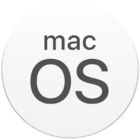Sometimes, you need to have a separate OS from your running one for testing purposes. Running Linux or Windows is straightforward in nowadays using Virtualization. However, running Mac OS is still a nightmare.
This is why I’ve searched and found 2 exciting projects that I wanted to share. The first one is based on VirtualBox, while the second one on KVM.
The funniest part is that both solutions are simply shell scripts :).



